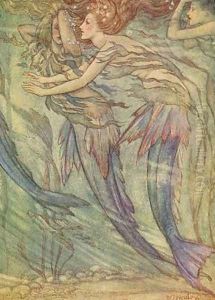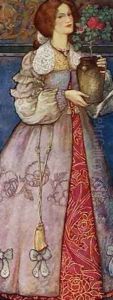William James Neatby Paintings
William James Neatby was a British artist and designer known for his work in the Art Nouveau style, particularly in ceramics and architectural decoration. Born in 1860 in Barnsley, Yorkshire, Neatby showed an early talent for art, which led him to pursue formal training. He attended the Westminster School of Art in London, where he honed his skills and developed his distinctive style.
Neatby's professional career took off when he began working for the renowned ceramics manufacturer Doulton & Co. (later known as Royal Doulton), based in Lambeth, London, and then in Burslem, Stoke-on-Trent. At Doulton, he became a leading designer, where his work contributed significantly to the company's reputation for high-quality decorative arts. Neatby's ceramic designs often featured richly colored glazes and elaborate motifs, including flora, fauna, and figures drawn from mythology and fantasy.
Beyond ceramics, Neatby made significant contributions to architectural decoration. One of his most famous works is the lavish and whimsical tile decoration for the Meat Hall of Harrods department store in London, completed in 1902. This work is a prime example of Neatby's skill in creating vibrant, imaginative public art that combines functionality with aesthetic appeal.
Despite his success, Neatby's career was relatively short-lived. He passed away in 1910 at the age of 50. Nevertheless, his legacy lives on through his contributions to the Art Nouveau movement and his influence on British decorative arts. Neatby's work is characterized by its inventive use of color and form, and his ability to infuse everyday objects with a sense of beauty and fantasy. Today, his works are considered important examples of early 20th-century design and are collected and admired by enthusiasts of the period.

